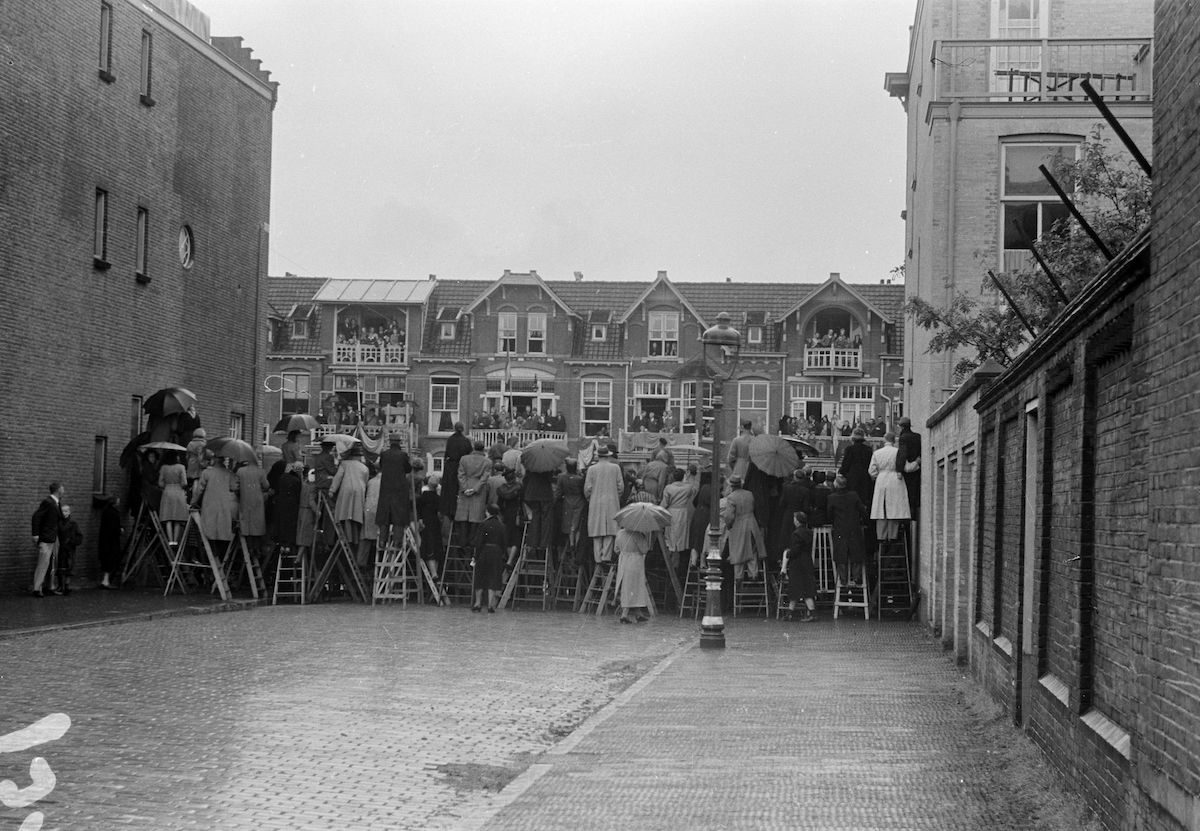
Menno Huizinga (October 28, 1907 – September 14, 1947) was a Dutch photographer working as a spy for the Resistance. He took illegal reportage photographs of current events on the country’s streets. From October 1944, Huizinga took photos on microfilm of the consequences of the German occupation in The Hague. His photographs helped, among others, Nederlandsche Vereeniging voor Luchtbescherming, the resistance group Packard, the Municipality of The Hague and the Local Interkerkelijk Bureau’s Gravenhage en Omreken.
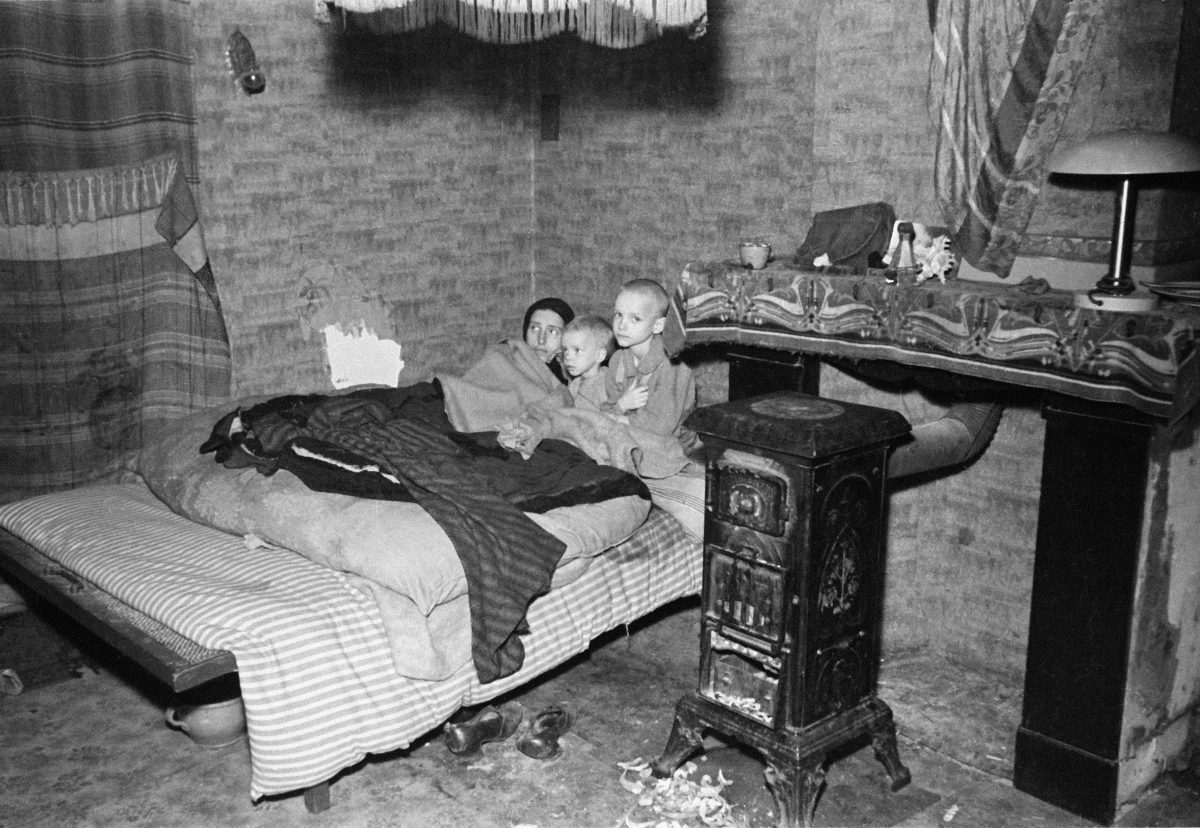
War & Mass Murder
On May 10, 1940, German troops launched a surprise attack on The Netherlands without a declaration of war. On 15 May, The Netherlands officially signed the surrender with Germany.
In September 1944, encouraged by the Dutch government in exile, Dutch railway workers downed tools. The strike was intended to aid the Allied advance by curtailing German troop movements. But Operation Market Garden failed. The Germans sought vengeance. They placed an embargo on all inland shipping, preventing farm food from reaching cities, including The Hague. More than 20,000 Dutch starved to death.
On 6 June 1944, Allied forces landed in Normandy. The Germans surrendered their grip on The Netherlands on 5 May 1945.
The final death toll was huge: 205,901 Dutch men and women had died of war-related causes; 107,000 had been murdered in The Holocaust.
The Liberators, Canadian, British and Polish forces, were greeted by relieved survivors of Nazi horror. Menno Huizinga was there with his camera.
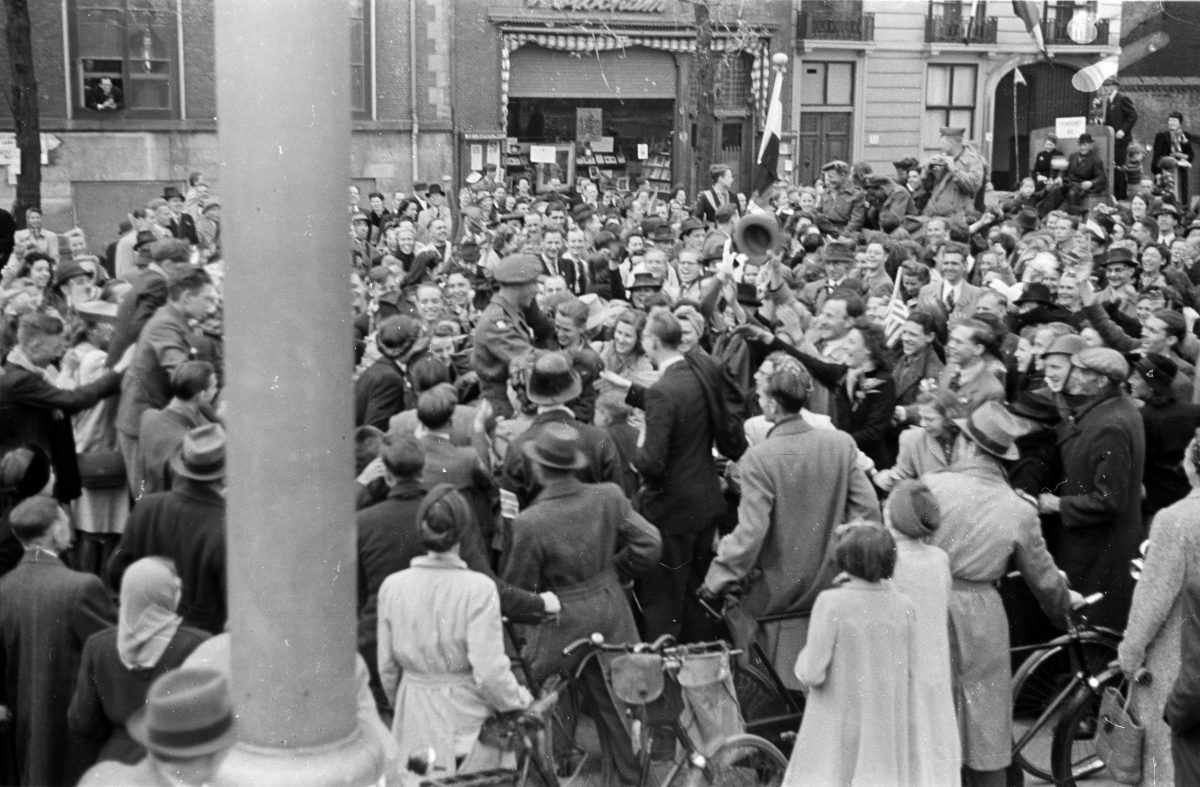
Photo from the Huizinga collection of the NIOD. Canadian soldiers are greeted with their vehicles by a frenzied crowd at the Buitenhof, The Hague (May 6, 1945).
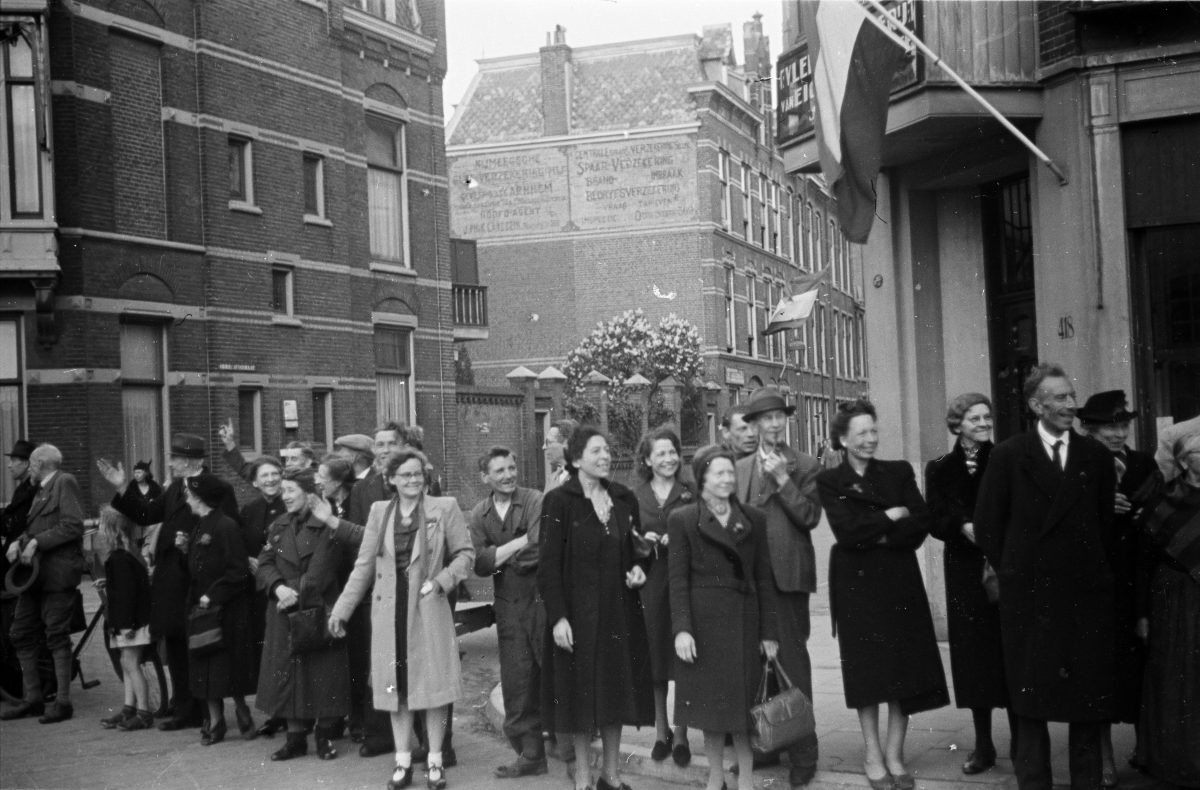
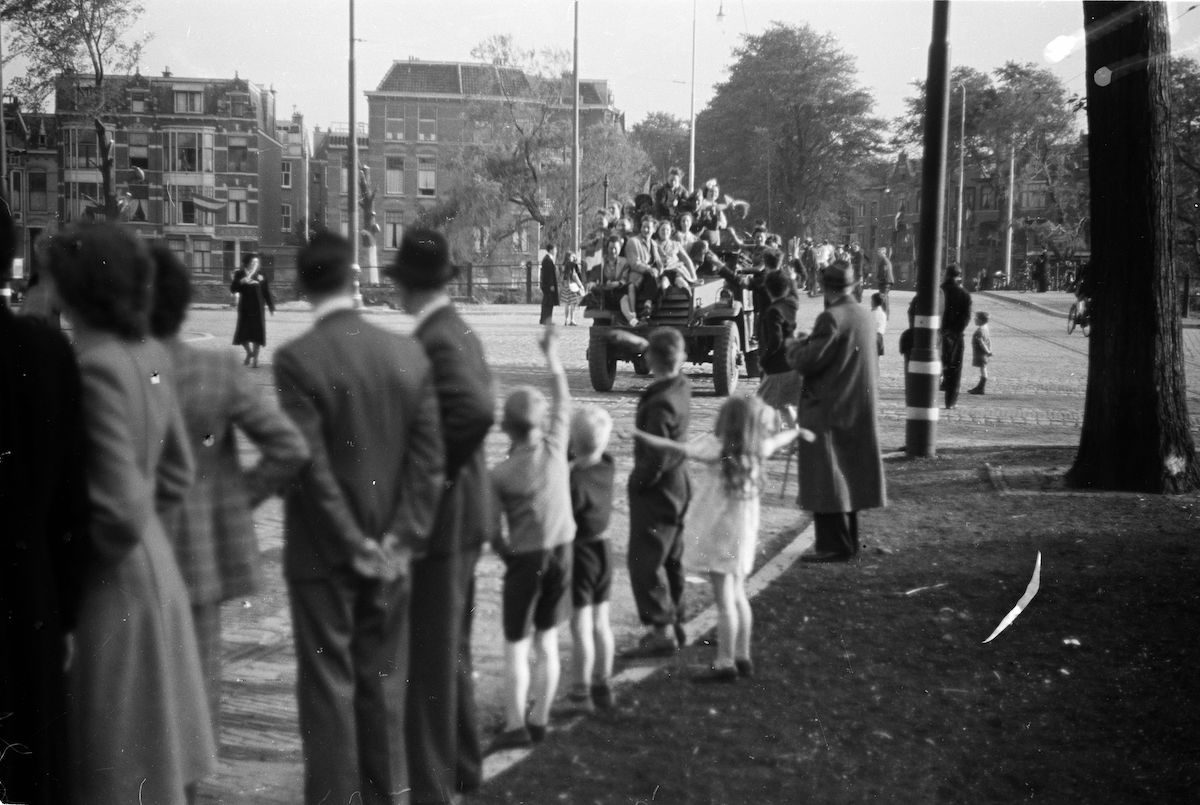
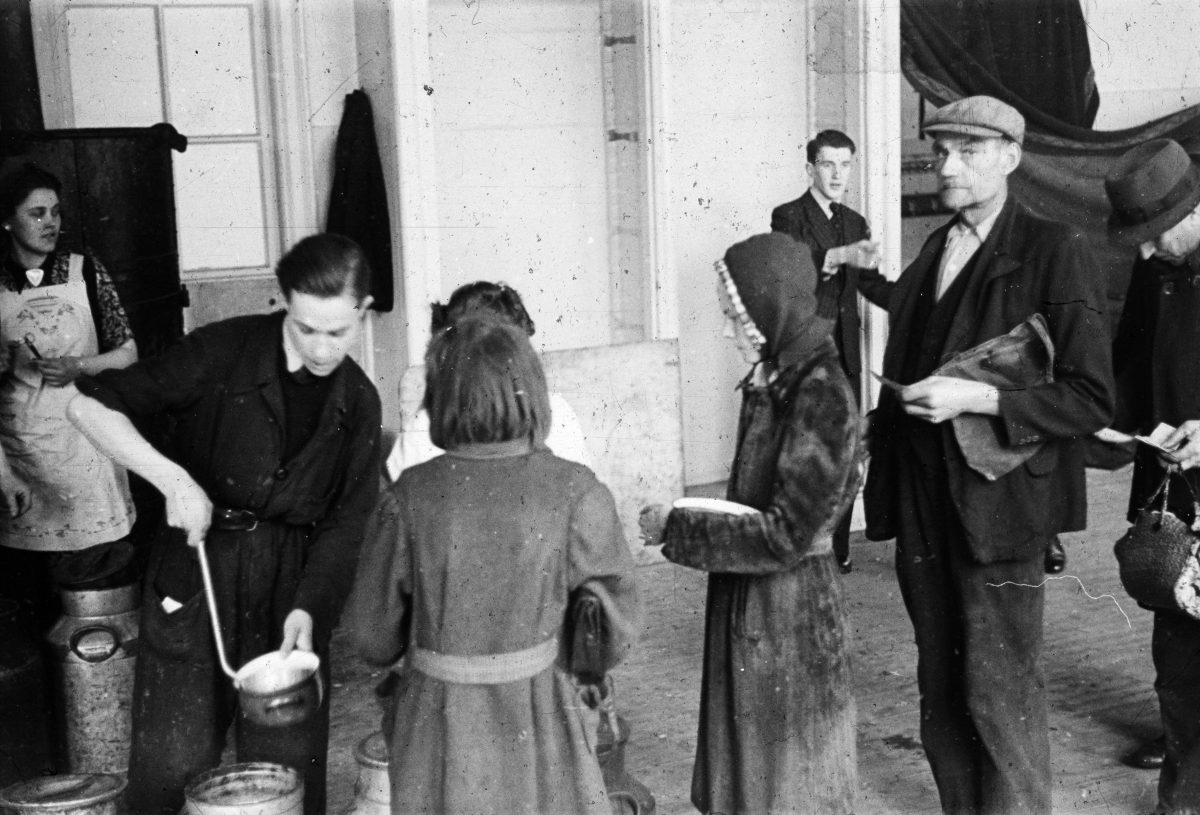
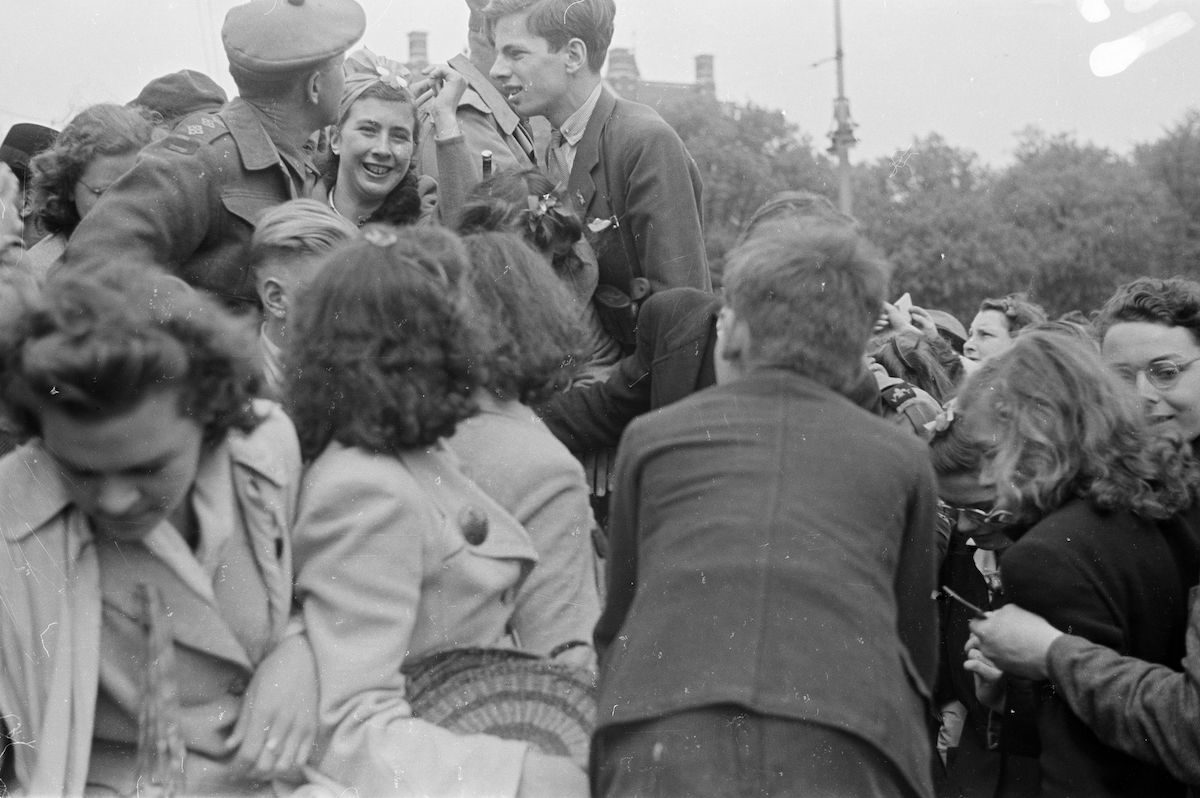

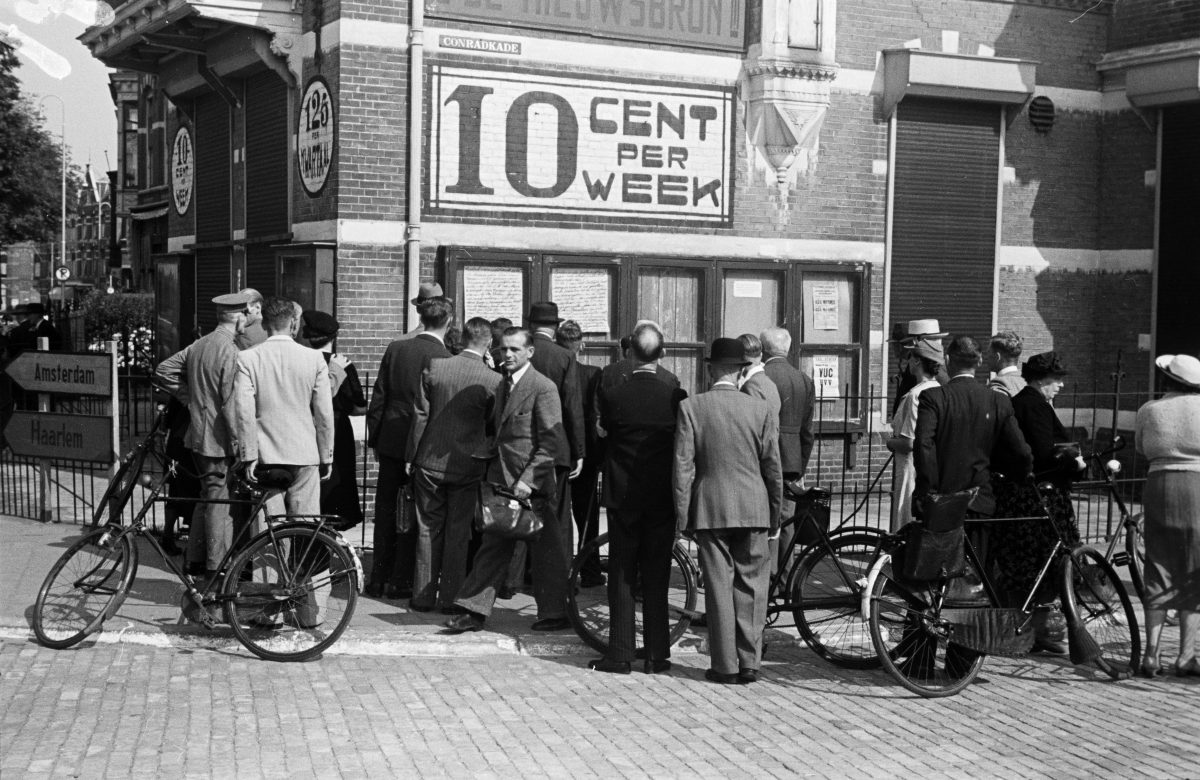
Photo from the Huizinga collection of the NIOD. A group of people read a series of handwritten wall papers in the street, under an advertisement for the newspaper “De Nieuwsbron”.
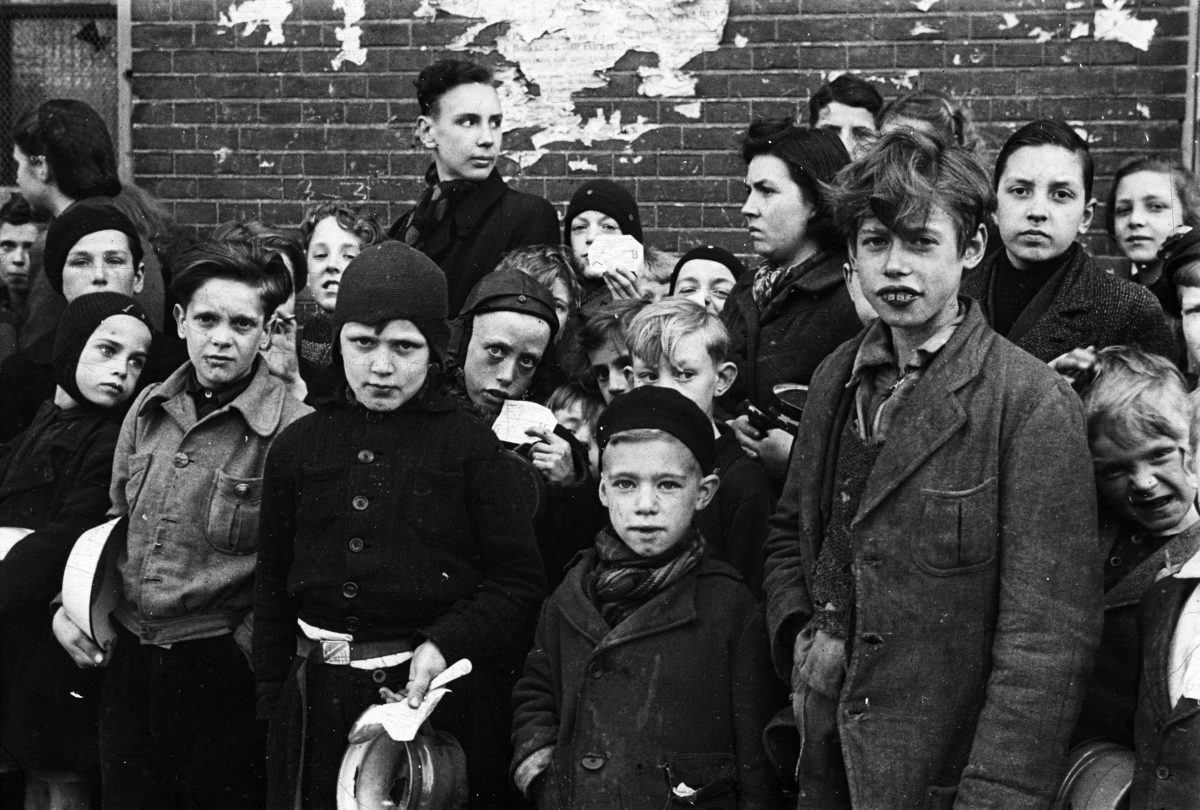
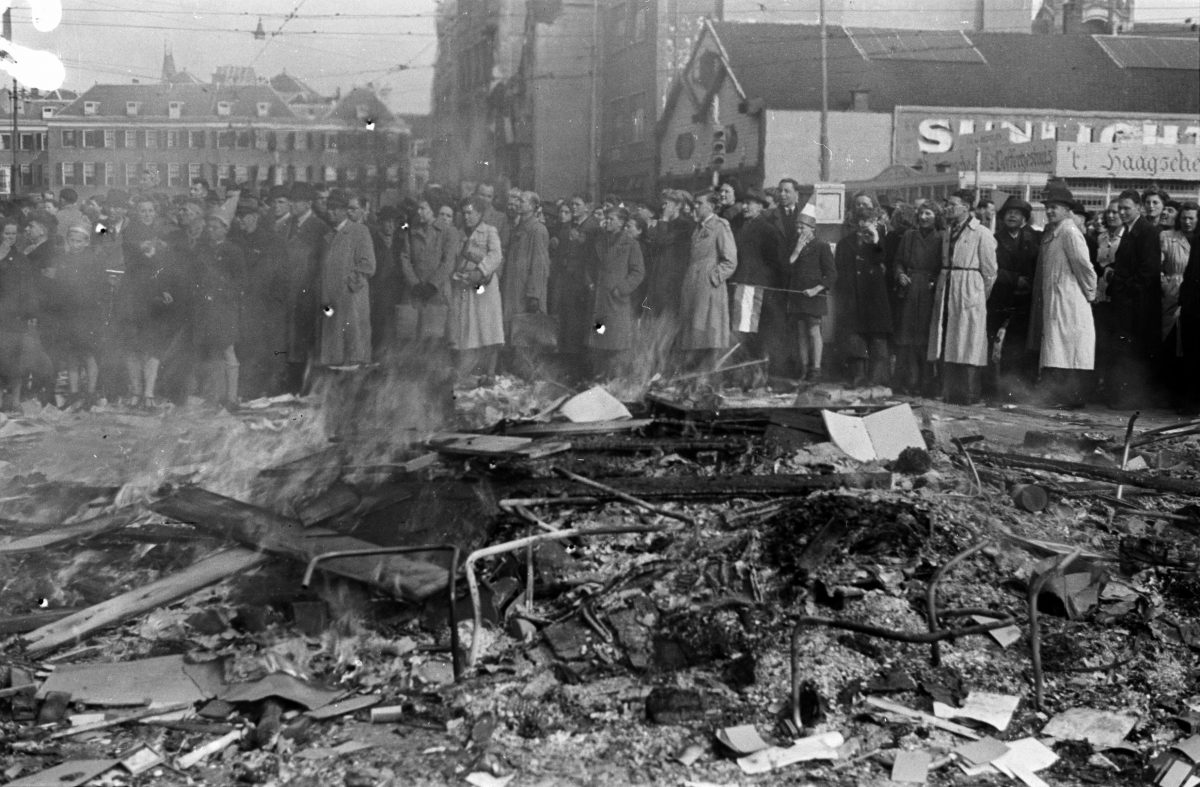
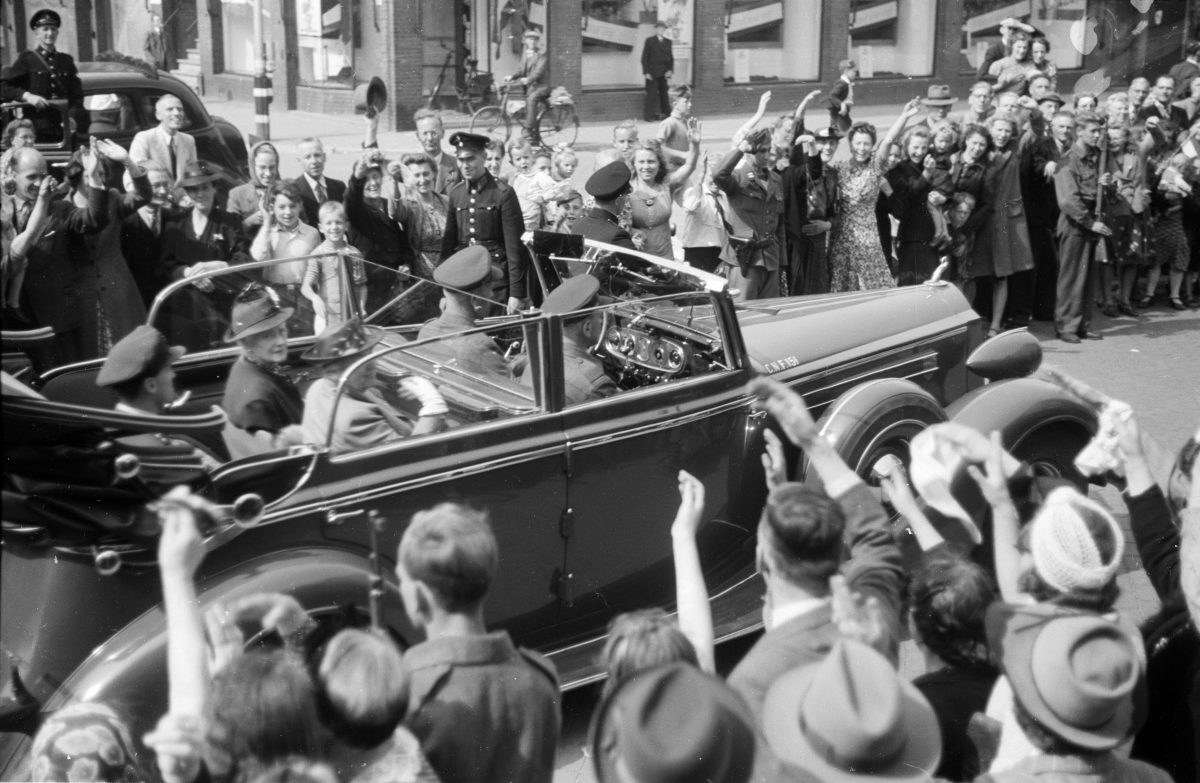
Photo from the Huizinga collection of the NIOD. Entry of Queen Wilhelmina in The Hague
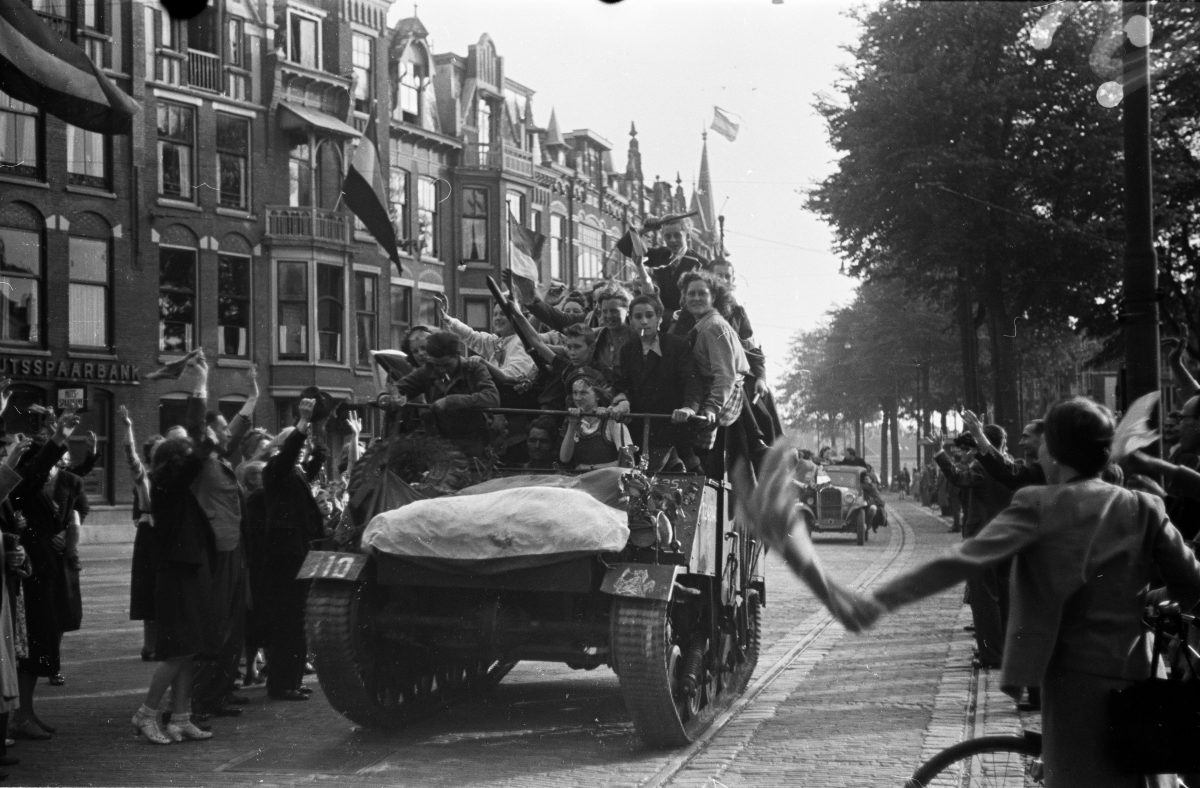
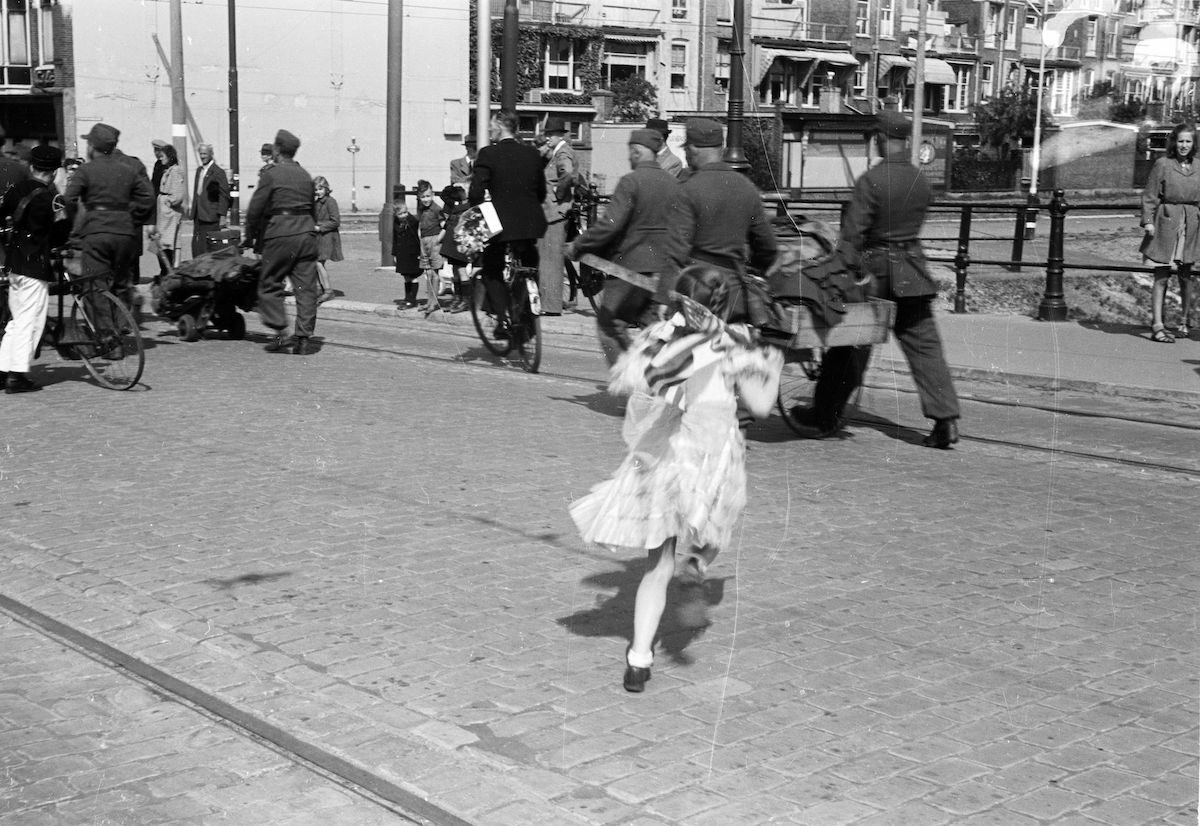
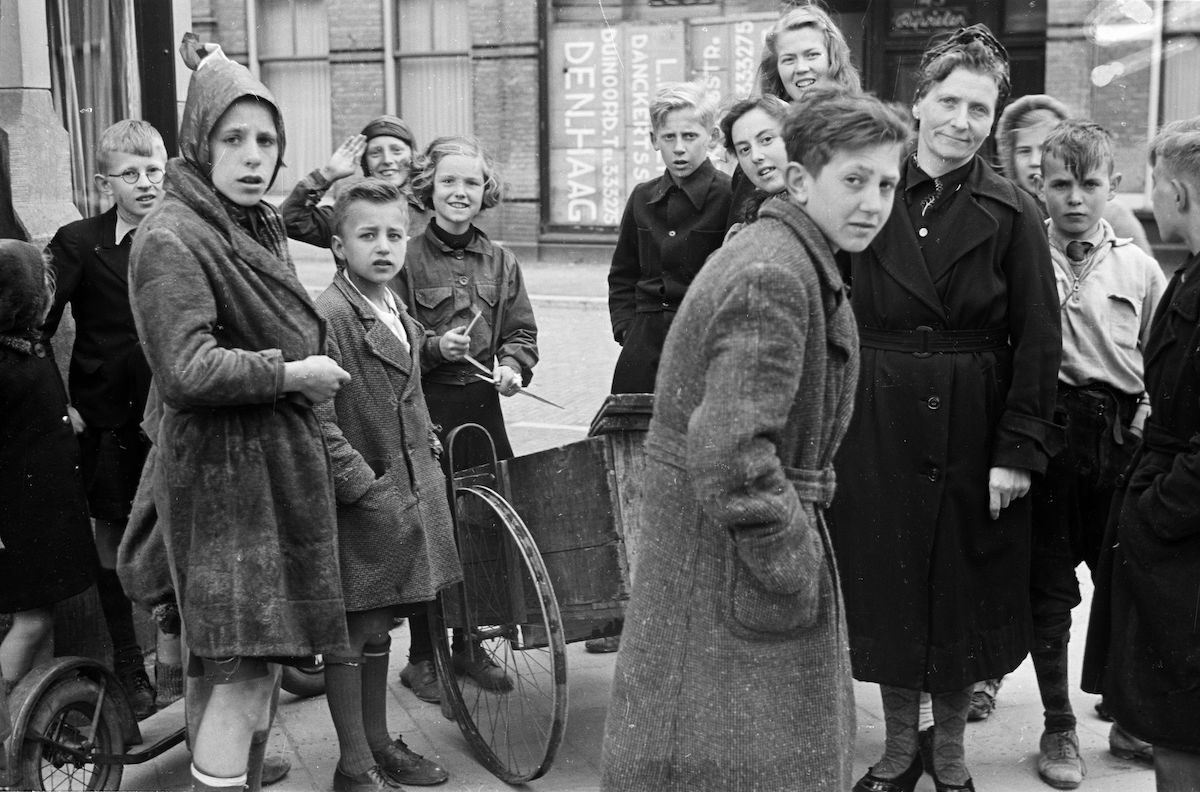
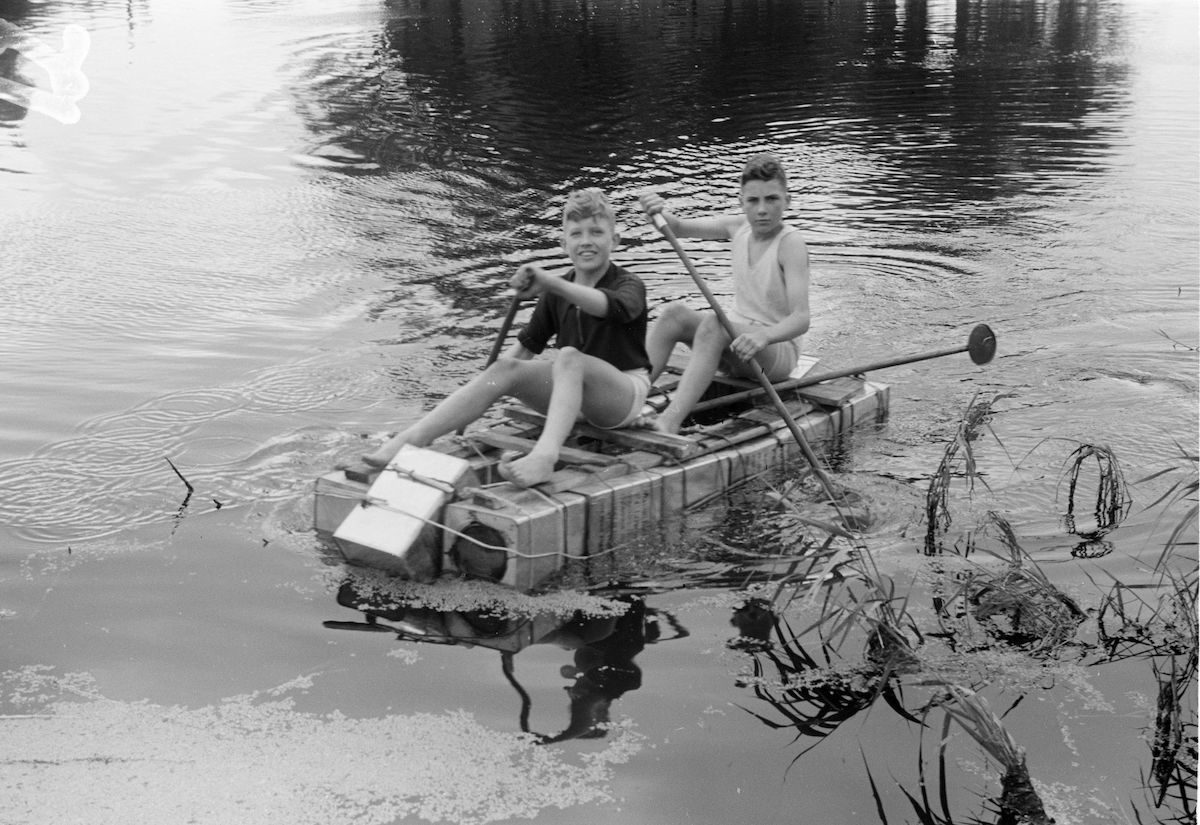
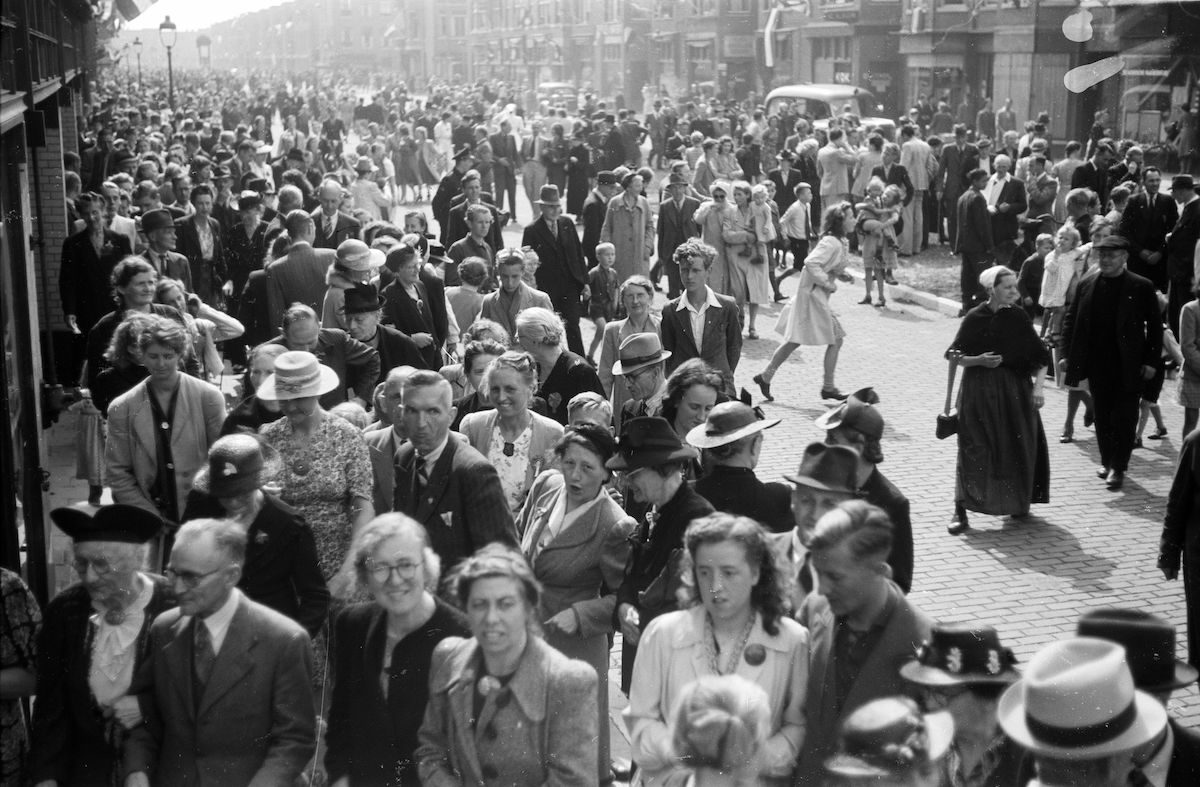
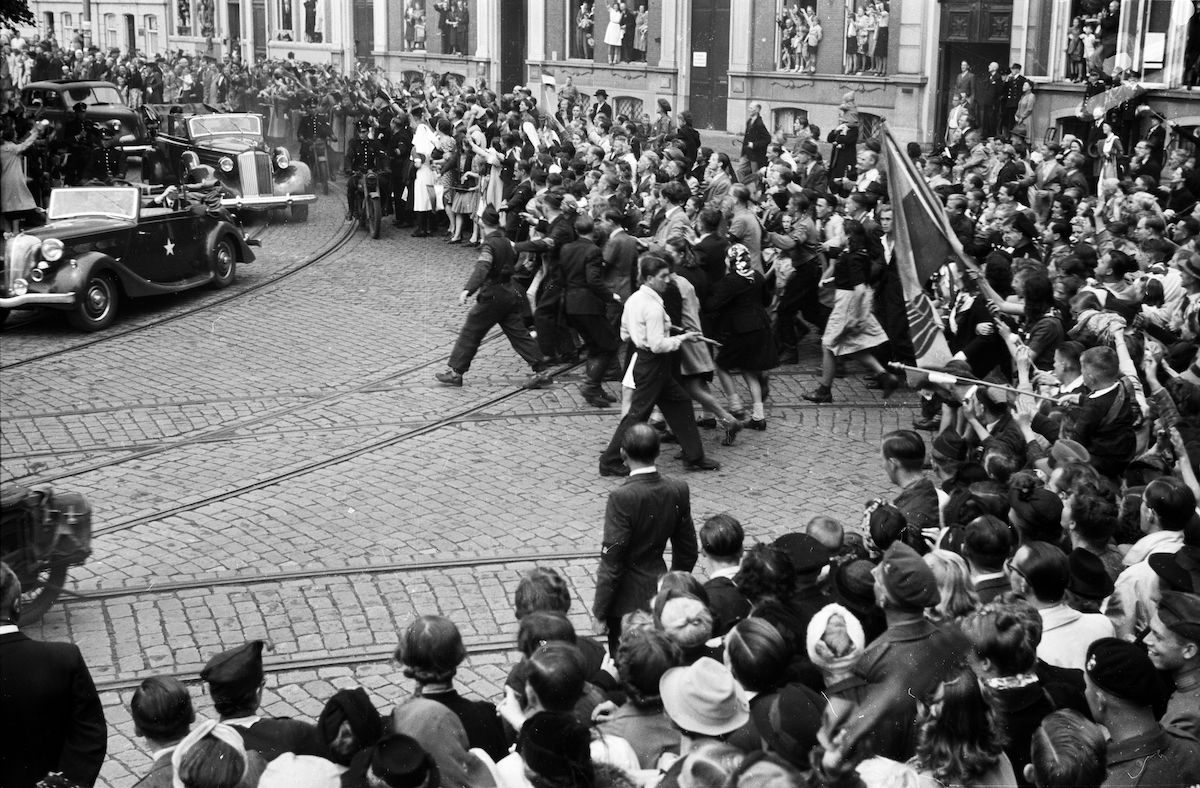
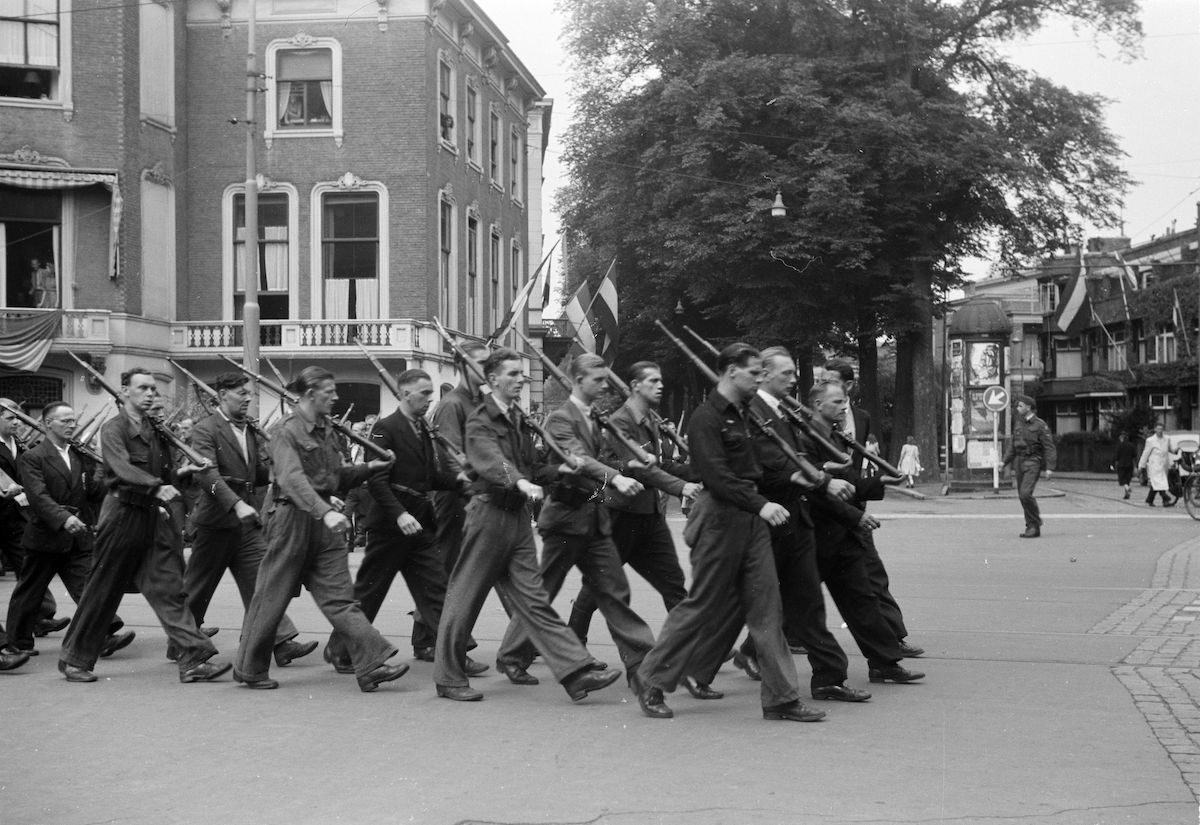

Inscription next to the front door of the house at 99 Riouwstraat in The Hague after a V2 impact on January 25, 1945. The residents, Family A. Tamson, were not injured, but the house was severely damaged. At 8:15 am in the morning of January 25, a V2 crashed in a residential area of the Archipelbuurt. The houses at Riouwstraat 96 to 120 were destroyed, resulting in 10 deaths. Menno Huizinga was part of the Hiding Camera and illegally took photos during the occupation.
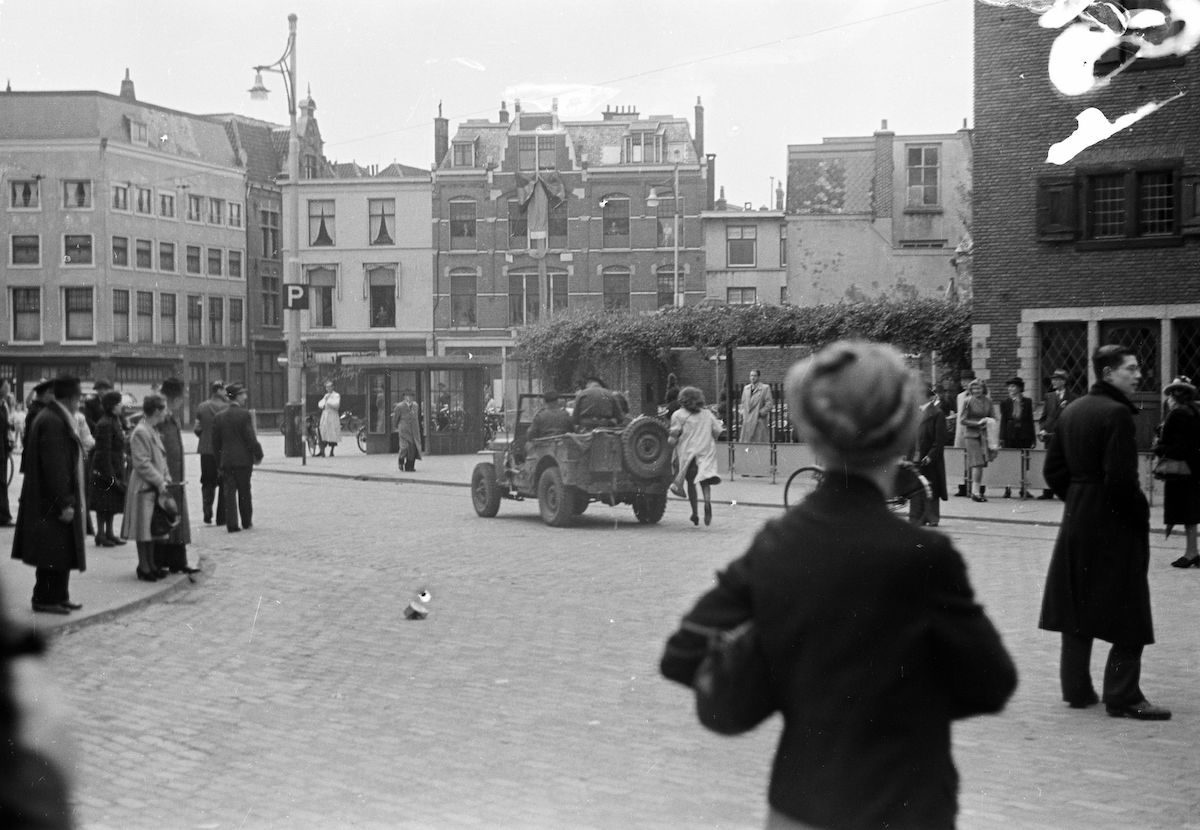
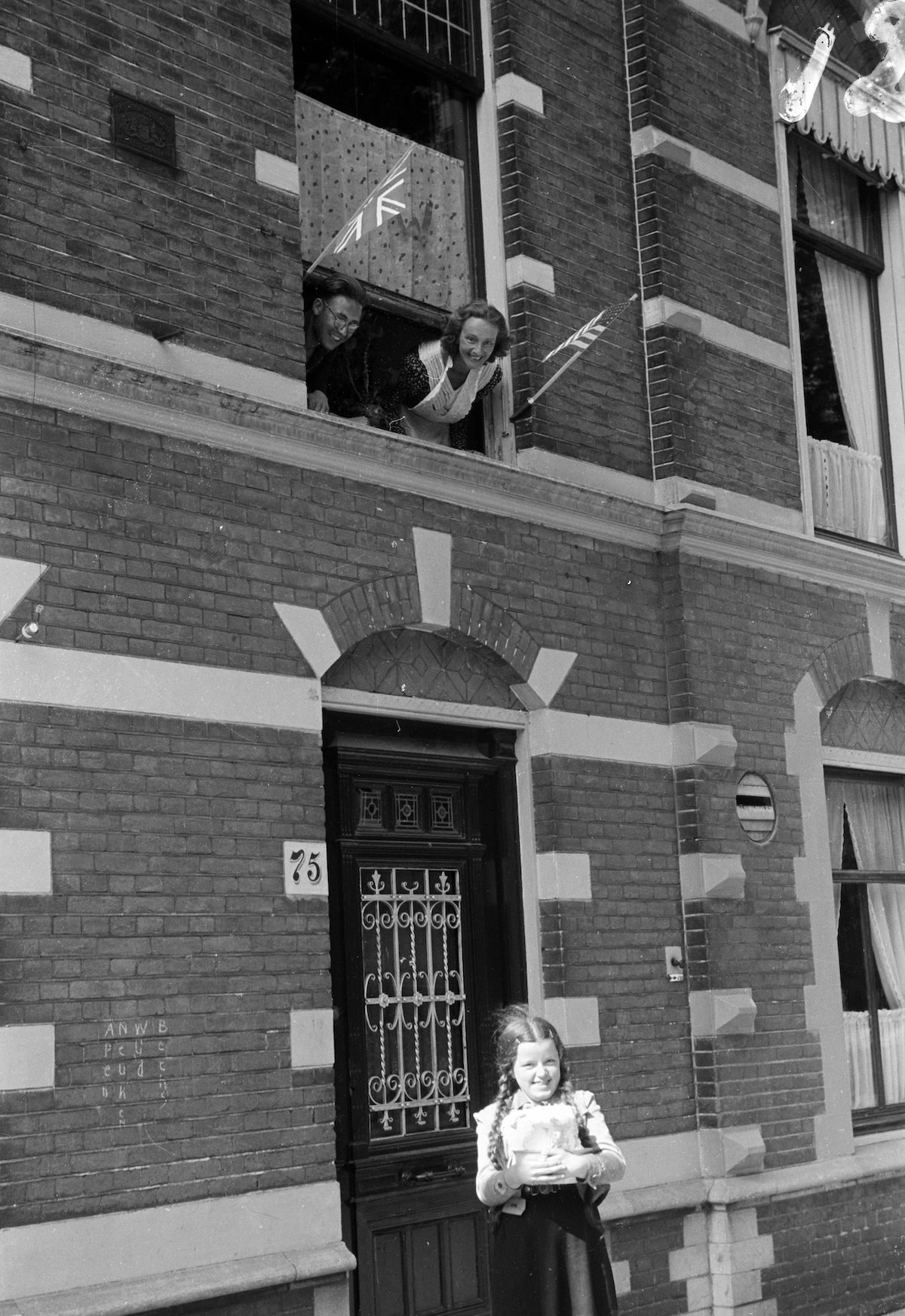
Photo from the Huizinga collection of the NIOD. In front of a house, a girl on the street proudly shows a bowl with a lump of butter.

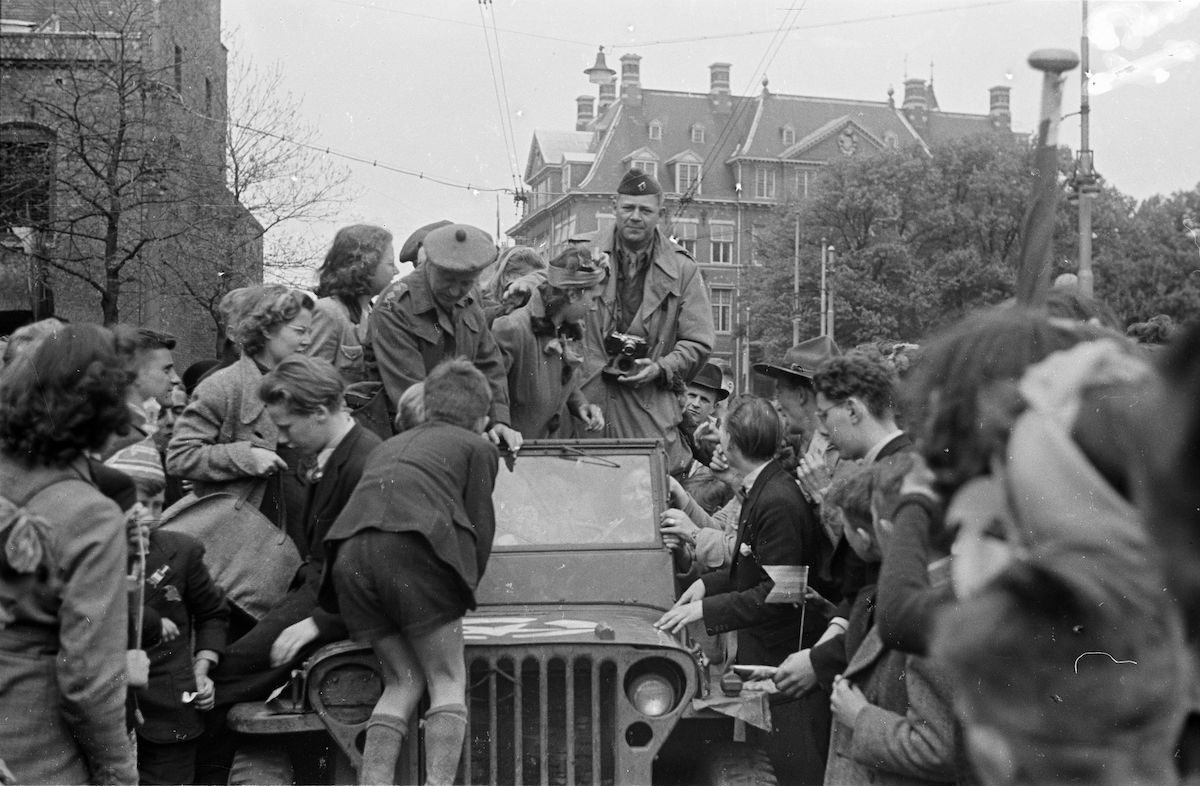
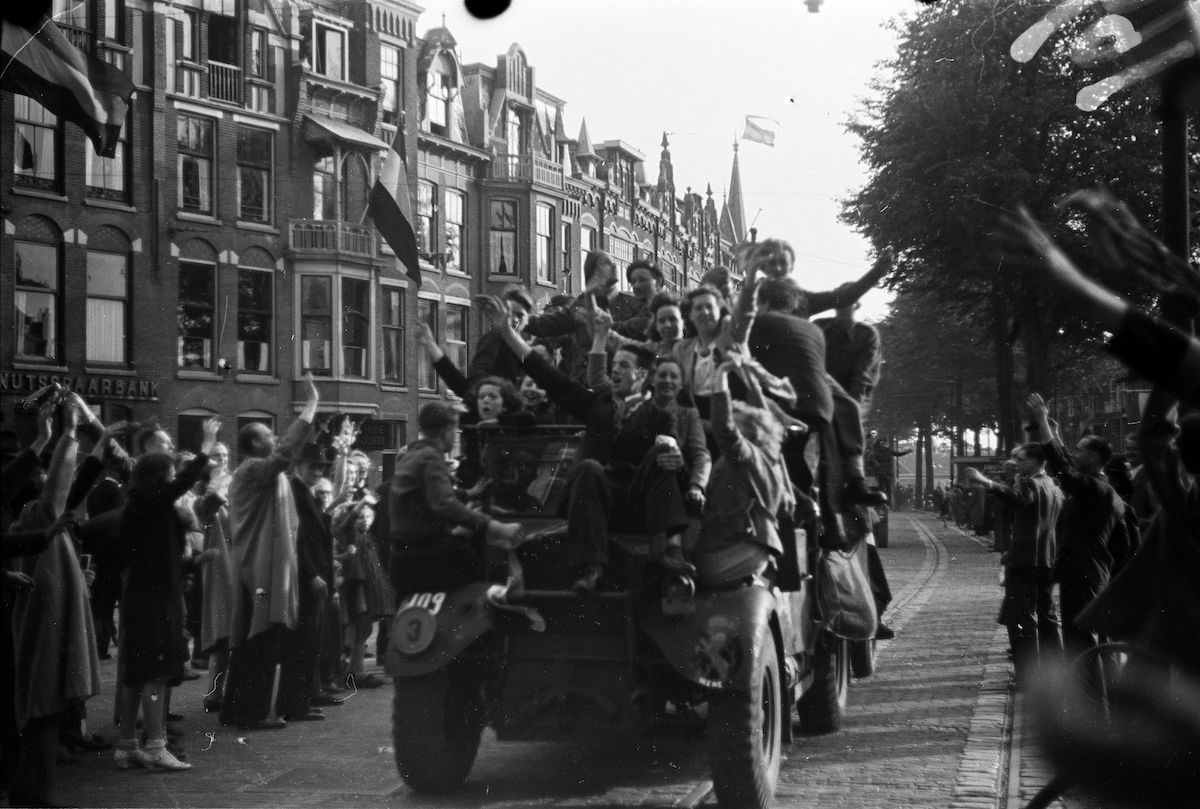
A frenzied crowd on the corner of Groot Hertoginnelaan and Obrechtstraat in The Hague greeted the incoming vehicles of the Princess Irene brigade in the early evening on 8 May 1945. Menno Huizinga was part of the Ondergedoken Camera and took illegal photos during the occupation. He mainly did this in his hometown The Hague.
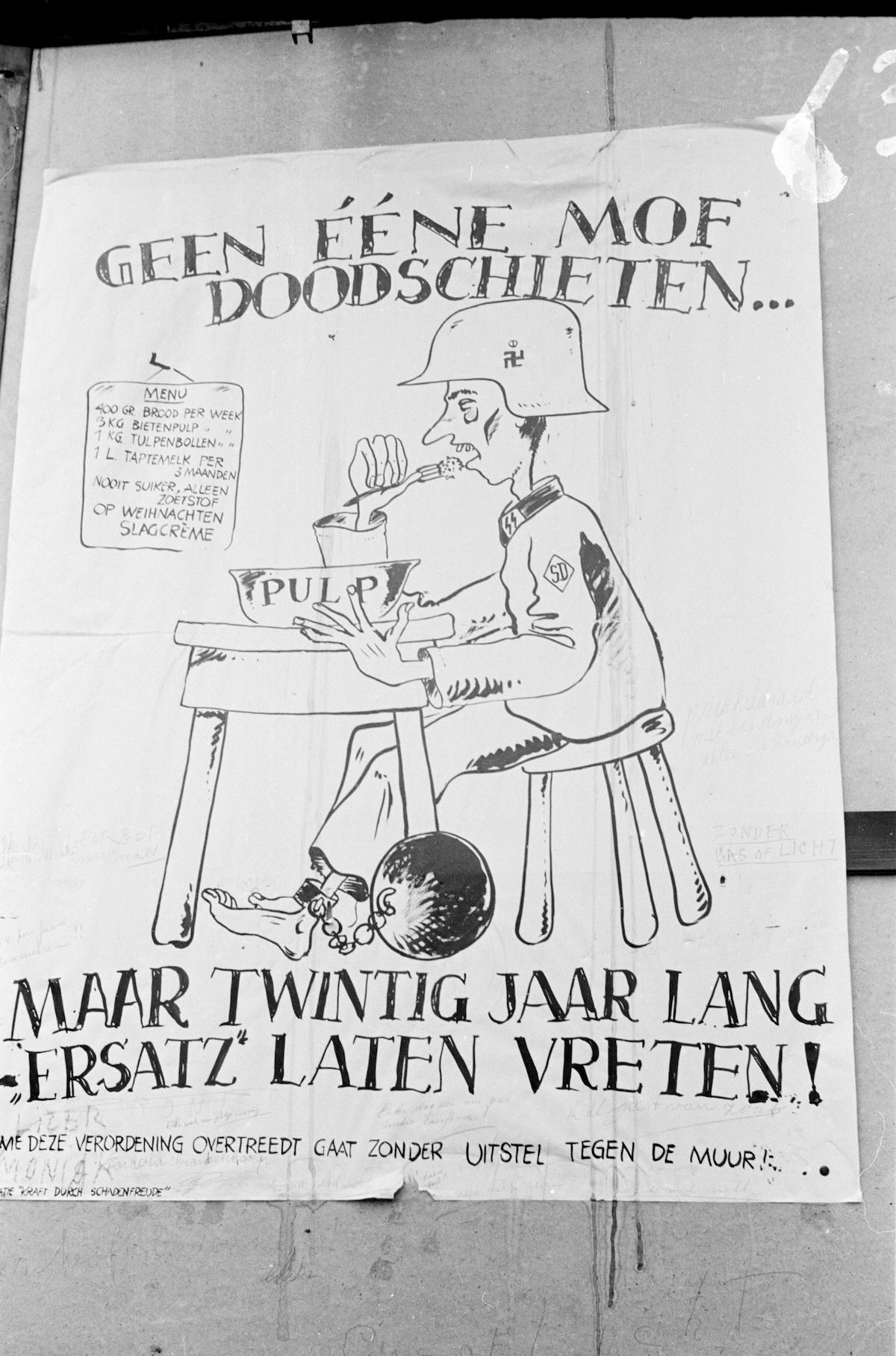
Photo from the Huizinga collection of the NIOD. Cartoon posted on the Buitenhof, against the former German occupier because of hunger during the occupation.
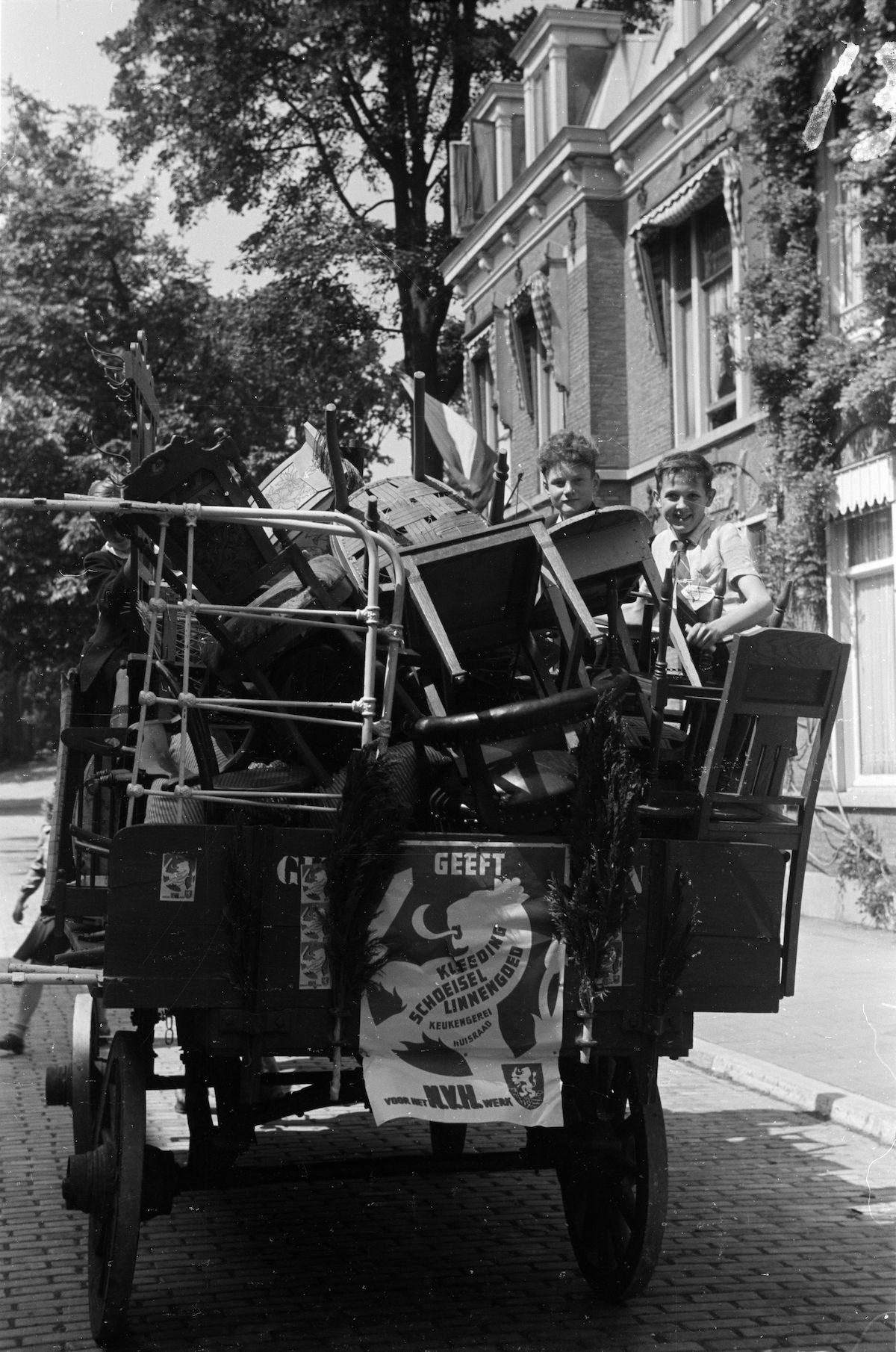
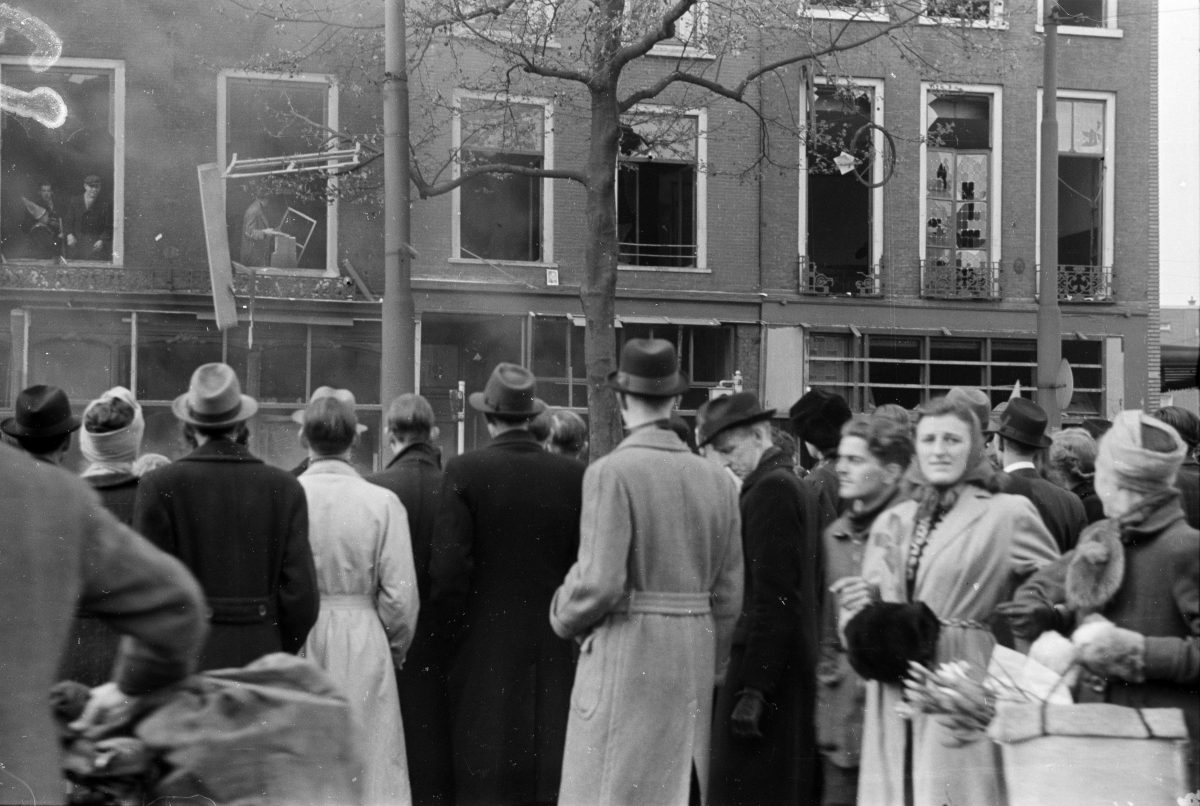
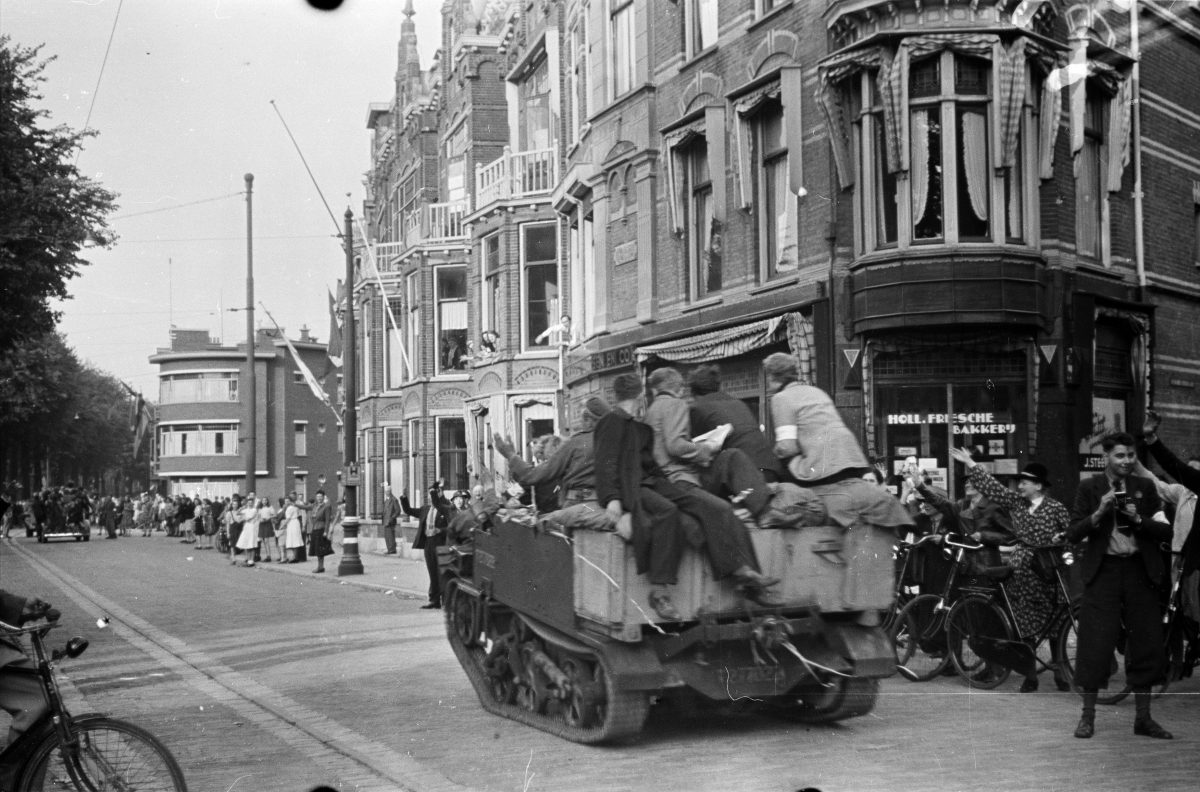

A frenzied crowd on the corner of Groot Hertoginnelaan and Obrechtstraat in The Hague greeted the incoming vehicles of the Princess Irene brigade in the early evening on 8 May 1945. Menno Huizinga was part of the Ondergedoken Camera and took illegal photos during the occupation. He mainly did this in his hometown The Hague.

Photo from the Huizinga collection of the NIOD. Children eat half a liter of supplementary food, which they received daily during the Hunger Winter from the Inter-Church Office.
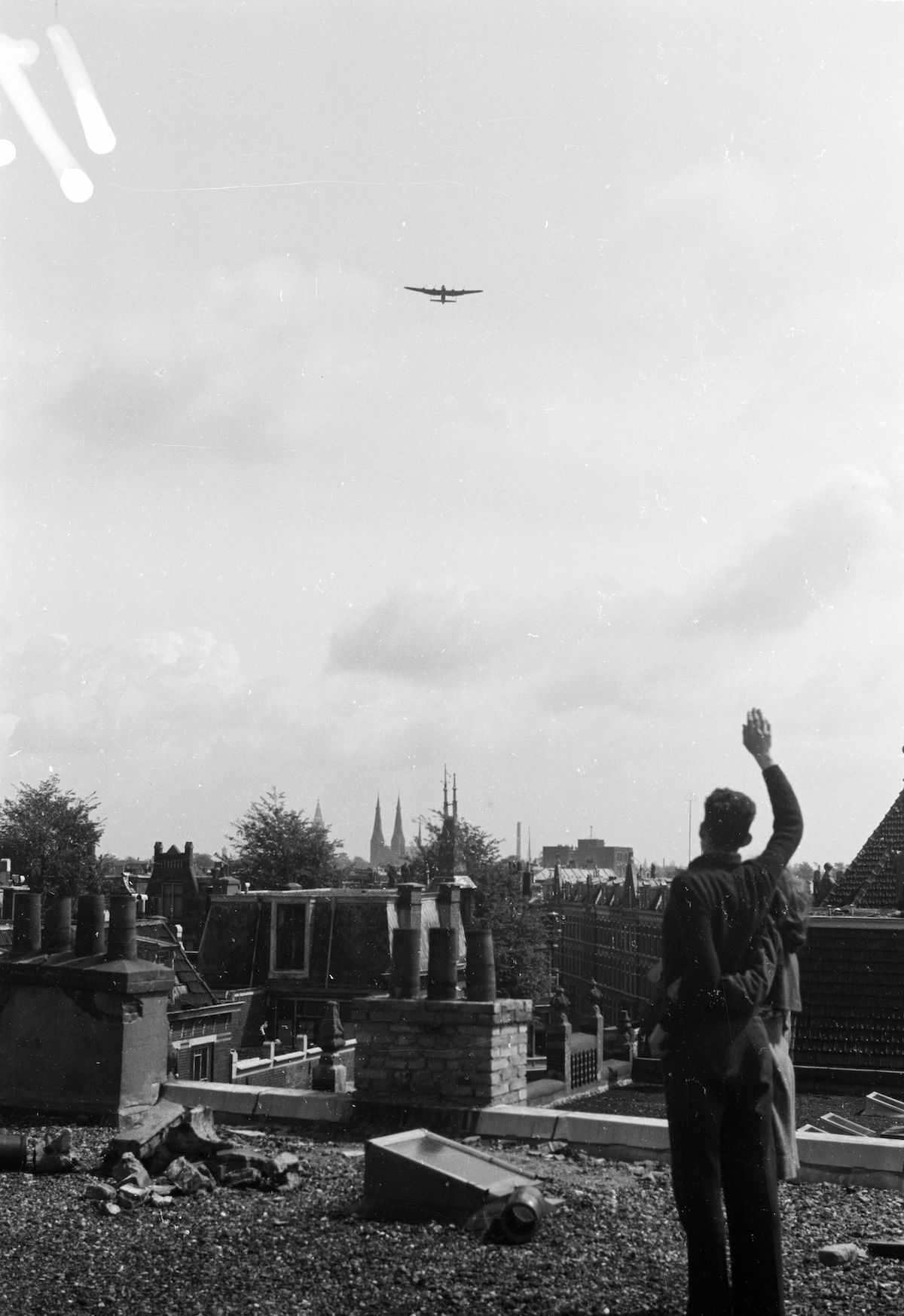
Images: Wikicommons. Photos from the Huizinga collection of the NIOD.
Lead Photo: In the rain, the audience looks over a wall to the Canadian liberation parade, by Menno Huizinga.
Would you like to support Flashbak?
Please consider making a donation to our site. We don't want to rely on ads to bring you the best of visual culture. You can also support us by signing up to our Mailing List. And you can also follow us on Facebook, Instagram and Twitter. For great art and culture delivered to your door, visit our shop.



